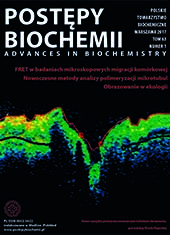Radar as imaging tool in ecology and conservation biology
Abstract
Migrations and dispersal are among the most important ecological processes that shape ecosystems and influence our economy, health and safety. Movements of birds, bats and insects occur in a large spatial scale â regional, continental, or intercontinental. However, studies of these phenomena using classic methods are usually local. Breakthrough came with the development of radar technology, which enabled researchers to study animal movements in the atmosphere in a large spatial and temporal scale. The aim of this article was to present the radar imaging methods used in the research of aerial movements of birds, bats and insects. The types of radars used in research are described, and examples of the use of radar in basic research and in conservation biology are discussed. Radar visualizations are used in studies on the effect of meteorological conditions on bird migration, on spatial and temporal dynamics of movements of birds, bats and insects, and on the mechanism of orientation of migrating birds and insects. In conservation biology research radars are used in the monitoring of endangered species of birds and bats, to monitor bird activity at airports, as well as in assessing the impact of high constructions on flying birds and bats.
Downloads
Published
Issue
Section
License
All journal contents are distributed under the Creative Commons Attribution-ShareAlike 4.0 International (CC BY-SA 4.0) license. Everybody may use the content following terms: Attribution — You must give appropriate credit, provide a link to the license, and indicate if changes were made, ShareAlike — If you remix, transform, or build upon the material, you must distribute your contributions under the same license as the original. There are no additional restrictions — You may not apply legal terms or technological measures that legally restrict others from doing anything the license permits.
Copyright for all published papers © stays with the authors.
Copyright for the journal: © Polish Biochemical Society.




